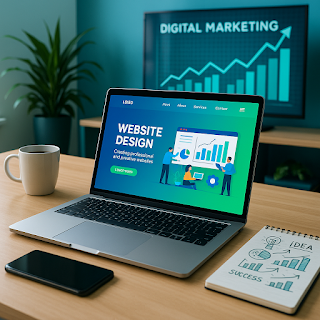5 Reasons to Use Infographics in Your Content
In today's fast-paced digital world, capturing and maintaining your audience's attention is more challenging than ever. While text-based content remains valuable, infographics have emerged as a powerful tool to communicate complex information quickly and effectively. Here are five compelling reasons why you should incorporate infographics into your content strategy.
1. Enhanced Visual Appeal and Engagement
Infographics transform dry statistics and complex data into visually striking content that immediately grabs attention. The combination of colors, icons, charts, and typography creates an aesthetic appeal that plain text simply cannot match. Research shows that visual content receives 94% more views than text-only content, making infographics a smart choice for boosting engagement rates across all platforms.
2. Improved Information Retention
The human brain processes visual information 60,000 times faster than text. When you present information through infographics, you're tapping into this natural preference for visual learning. Studies indicate that people remember 65% of visual information three days later, compared to only 10% of text-based information. This makes infographics particularly effective for educational content, tutorials, and data-heavy reports.
3. Simplified Complex Data
Infographics excel at breaking down complicated concepts, statistics, and processes into digestible chunks. Whether you're explaining a multi-step workflow, presenting survey results, or comparing different options, infographics can make complex information accessible to a broader audience. This is especially valuable when targeting diverse audiences with varying levels of expertise in your subject matter.
4. Increased Social Media Shareability
Social media platforms favor visual content, and infographics are among the most shareable formats. They're perfectly sized for platforms like Pinterest, Instagram, and LinkedIn, where visual content performs exceptionally well. A well-designed infographic can go viral, extending your reach far beyond your immediate audience and driving significant traffic back to your website or blog.
5. Better SEO Performance
Search engines increasingly prioritize user engagement metrics, and infographics contribute positively to these signals. They typically increase time spent on page, reduce bounce rates, and generate more backlinks when other websites reference your visual content. Additionally, properly optimized infographics with descriptive alt text and relevant keywords can rank in image search results, providing another avenue for discovery.
Getting Started with Infographics
Creating effective infographics doesn't require advanced design skills. Tools like Canva, Piktochart, and Venngage offer user-friendly templates and drag-and-drop interfaces. Focus on clear messaging, consistent branding, and ensure your data is accurate and well-sourced.
Remember, the best infographics balance visual appeal with informational value. Start by identifying your key message, then build your visual elements around that core concept. With practice, infographics can become a cornerstone of your content marketing strategy, helping you communicate more effectively while standing out in an increasingly crowded digital landscape.




Comments
Post a Comment